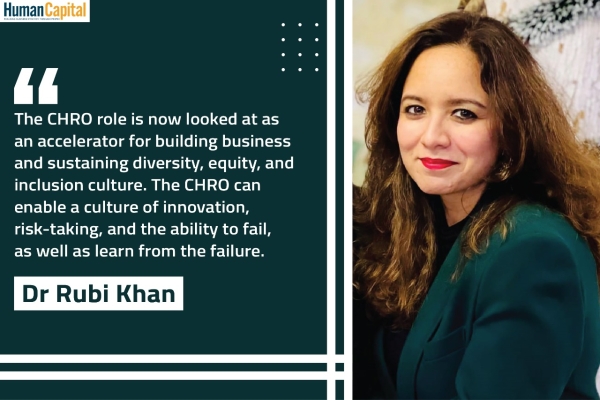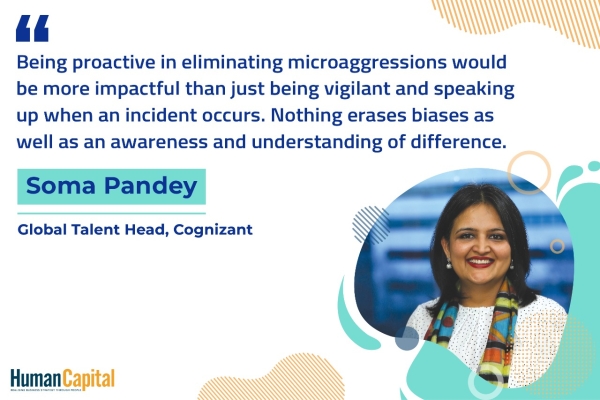'Facts First' philosophy dominates the exercise relating to scenario building, creating alternatives futures, and the comprehension of the possible impact of predetermineds on working location preferences in the future.
Before delving into the main story, it is necessary to examine the history of the Plague pandemic which was brought in from Hong Kong to British India in 1896. It has been reported that it killed around 13.5 Million people in undivided India over the next thirty years (1926). According to the World Health Organisation, the pandemic was considered to be active until 1960, when worldwide casualties dropped to 200 per year. The colonial government’s measures to control the disease in India included quarantine, isolation camps and travel restrictions. As we know, post the pandemic, life became normal - until the advent of COVID-19 in 2020.
Considering the above, one would like to admit that this piece is ‘work in progress’, and before taking an imaginative leap into the future, one has looked into the statistics available in the public domain on changing work location preferences. An estimated 72% of knowledge workers are not keen to return to the office full-time, and hence, as preferred by the employees, companies are required to start investing in hybrid environments. However, companies must bear in mind that ‘What goes up will come down’.
An estimated 72% of knowledge workers are not keen to return to the office full-time, and hence, as preferred by the employees, companies are required to start investing in hybrid environments.
It is interesting to look at the survey report posted by Slack, a US-based collaboration hub, to understand the current global trend. The report indicates a clear preference for a hybrid working location. And, it appears as though the preferences for a working location has been ‘permanently disrupted’ due to COVID-19. However, one cannot be sure.
.png)
We are undoubtedly standing at the dawn of a new era. But, I personally see a possible reversal in terms of work location preference for hybrid in favour of ‘office only’. If not a complete reversal; the hybrid working location preference will weaken to a great extent as compared to the current level i.e. 72% (though there is no exclusive survey report in the Indian context available over the internet, the other collective survey reports largely show similar trends in India).
In view of the emerging positive trends, as shown in the table alongside, we may like to examine and open discussions on ‘Hybrid work location preference post COVID-19 vaccine,’ say in the next 5-10 years.
.png)
A possible reversal in terms of work location preference for hybrid in favour of ‘office only’ is highly likely. If not a complete reversal; the hybrid working location preference will weaken to a great extent…
My discussions with corporate executives and students in India, the US and the UK reveal that physical presence might be required for induction, orientations, teambuilding and project kickoffs, but not necessarily for other work. They feel that the tasks that may take several hours in the office or at university campuses may be completed in just a few hours at home or from remote work locations (workplace). They see that remote working works well, and witness high productivity! However, they are riddled with many questions, anxieties, and push backs, since nothing is ‘absolute’ and lasts forever. Work location preferences are something similar! Further, the reconfiguration of life will always remain to be a challenge for humanity.
Let us recap what we mean by Hybrid work location preference. In the most generic usage, ‘Hybrid’ is about reconfiguring life and creating a more flexible future of work. In other words, hybrid work tends to encompass more freedom around ‘WHEN TO WORK AS WELL AS WHERE’. This description suggests that it generally grants more autonomy to employees to fit work around the other aspects of their lives, rather than the other way round. It clearly signifies that hybrid is the best of both worlds - structure and sociability on one hand, and independence and flexibility on the other.
Well, the new models of work location preferences are continuously evolving and are yet to assume a permanent pattern. Let us understand what Kissflow, a digital workplace solution and services company having offices in the US and India, is doing – they have introduced a mixed working model called REMOTE+. The company has distributed the month in this manner - employees to work three weeks from anywhere with one week of officebased work. The company covers the accommodation cost for the office week and allows employees to return home for the rest of the time.
It is true that different industries will respond differently to the issue of adapting to new work location preferences - one model fits all will not work.
It is also necessary to examine work location preference from the angle of social needs fulfilment. We are well-acquainted with Maslow’s theory of hierarchy of needs wherein he talked about moving from Physiological needs to Security needs to Social needs to Esteem needs to Selfactualisation. At this point of time, this theory is prompting us to consider the influence of ‘Social needs’ (like affinity, relationship, belonging, affection, friendship) for people over working location preferences over a period of time. There is a feeling that hybrid working location preferences will come at the cost of fulfilment of social needs.
The arrival of the COVID-19 vaccine, which is almost at the door step, will help people to come out of the shell of ‘insecurity’. It will also encourage them to move from the security needs stage to the higher need i.e. social needs fulfilment. And that is when it will influence change in work location preference in favour of office only location.
The recent experiences of lockdown relaxation followed by festivals in India such as Dussehra, Diwali, and Thanksgiving- particularly in the US, surge in domestic and international travels, rapid increase in foot falls at the malls etc. make it evident that people by nature cannot sacrifice or change their basic nature of sociability. They cannot keep aside or put their social needs fulfilment on ice for long durations.
Presently, there is undoubtedly a tension between sociability and safety from the point of view of infection contraction. But it appears as though that people will try to reduce this tension and revert to normal life. However, it is difficult to say how soon - possibly in the next 3-5 years.
Let us look at 4 + 4 scenarios (8 alternative futures) in the context of Maslow’s hierarchy of needs and working location preferences and fulfilment of social needs.
.png)
.png)
Presently, there are several questions with respect to our indulgence in visualising working location preferences.
♦ Are we into ‘Forecast’ mode?
♦ Have we created ‘Scenarios’ (alternative futures - moving out of traditional single future to multiple futures) to understand the working location preferences?
♦ Do we have the sense of ‘new knowledge developing at the fringes’?
♦ Have we deliberated enough over the fine balance of predictability and uncertainty in the current and future business environment?
♦ Have we clearly understood the unfolding of ‘Predetermineds’?
Let us see what we mean by Forecast, Scenario, Predetermineds and Hope –
Forecasts
♦ Single future
♦ A statistical summary of expert opinion - also supported by survey data
♦ It requires that we first decide what we want to forecast (e.g. Demand of automobile, Working location preferences etc)
♦ Forecasting is useful in the short term, where things are reasonably predictable and uncertainty is relatively minimal compared to our ability to predict
Scenario
♦ Creating alternative or multiple futures for different types of industries
♦ A description of possible events and ‘weak signals’ which might have a dominating effect on the unfolding of the future
♦ Scenarios are used in estimating the probable effects of one or more variables (Environment issues like – Social, Political, Economic, Technology, Social - now Medical & Health is also added)
♦ A conceptual description of the future based on cause and effect
♦ Different parts of the world will develop in their own ways and at different paces.
♦ Scenarios explore “how the world will work” in the future

Predetermineds
Certain events have already occurred, but their consequences have not yet unfolded. Our ability to accurately comprehend the visible effect of predetermineds decreases substantially as the future timespan increases. For instance, a bent for hybrid working location preference, long–term effect of COVID-19 on society, dent on social needs fulfilment due to COVID-19, wildfires in Southern California, impact of changing demographics, African American COVID-19 mortality etc.
Hope
As shown in the last diagram, hope is the space created when ‘uncertainty’ increases and visible effect of ‘predeterminends’ decreases sharply as we move into a distant future, say in the next 5-10 years.
As stated earlier, this article is ‘work in progress’. ‘Facts First’ philosophy dominates the exercise relating to scenario building, creating alternatives futures, comprehension of the possible impact of predetermineds on working location preferences in the future. For sure, it is serious work and requires a good amount of research and deep exploration.

Are you comfortable working with dispersed colleagues?
Trending
-
SBI General Insurance Launches Digital Health Campaign
-
CredR Rolls Out 'Life Happens' Leave For Its Employees
-
Meesho Announces 30-Week Gender-Neutral Parental Leave Policy
-
Microsoft Unveils Tech Resilience Curriculum To Foster An Inclusive Future
-
60% Indian Professionals Looking For Job Change Due To COVID: Survey
-
SpringPeople And Siemens Collaborate For Digital Transformation Push
-
86% Professionals Believe Hybrid Work Is Essential For Work Life Balance: Report
-
Almost 1 In Every 3 People's Personal Life Affected Due To Work Stress
-
Meesho Rolls Out Reset And Recharge Policy For Employees
-
80% Of Talent Leaders & Academics Say Pandemic Changed Skill Needs For Youth: Report
-
Hero Electric Rolls Out 'Hero Care' Program For Employees
-
Human Capital In Collaboration With ASSOCHAM Hosts Virtual Conference
-
IKEA India, Tata STRIVE Collaborate To Create Employability And Entrepreneurship Opportunities
-
SAP India, Microsoft Launch Tech Skilling Program for Young Women
-
DXC Technology, NASSCOM Collaborate For Employability Skills Program
-
Lenskart To Hire Over 2000 Employees Across India By 2022
-
Mindtree Launches Learn-and-Earn Program
-
Tata AIA Extends 'Raksha Ka Teeka' To Its Employees
-
Swadesh Behera Is The New CPO Of Titan
-
NetConnect Global Plans To Recruit 5000 Tech Professionals In India
-
Hubhopper Plans To Hire 60% Of Indian Podcasters By 2022
-
Corporate India Needs More Women In Leadership Roles: Report
-
Aon to Invest $30 Million and Create 10,000 Apprenticeships by 2030
-
Tech Mahindra Launches ‘Gift a Career’ Initiative for Upskilling of Youth
-
40% Women Prefer Flexible Working Options in Post-COVID World: Survey
-
3 out of 4 companies believe they can effectively hire employees virtually: Report
-
Vodafone , CGI and NASSCOM Foundation launch digital skills platform
-
Odisha: Bank, postal employees to deliver cash for elderly, differently-abled persons
-
Skill India launches AI-based digital platform for "Skilled Workforce"
-
Hiring activity declines 6.73% in first quarter: Survey
-
70% startups impacted by COVID-19 pandemic
-
Bajaj Allianz Life ropes in Santanu Banerjee as CHRO
-
Over 70 Percent MSMEs look at cutting jobs to sustain businesses
-
93 Per Cent employees stressed about returning to office post-lockdown
-
Johnson & Johnson India announces family benefits for same gender partners
-
Indian firms turning friendly towards working mothers
-
Welspun India names Rajendra Mehta as new CHRO
-
Wipro partners with NASSCOM to launch Future Skills platform



Human Capital is niche media organisation for HR and Corporate. Our aim is to create an outstanding user experience for all our clients, readers, employers and employees through inspiring, industry-leading content pieces in the form of case studies, analysis, expert reports, authored articles and blogs. We cover topics such as talent acquisition, learning and development, diversity and inclusion, leadership, compensation, recruitment and many more.
Subscribe Now












































Comment